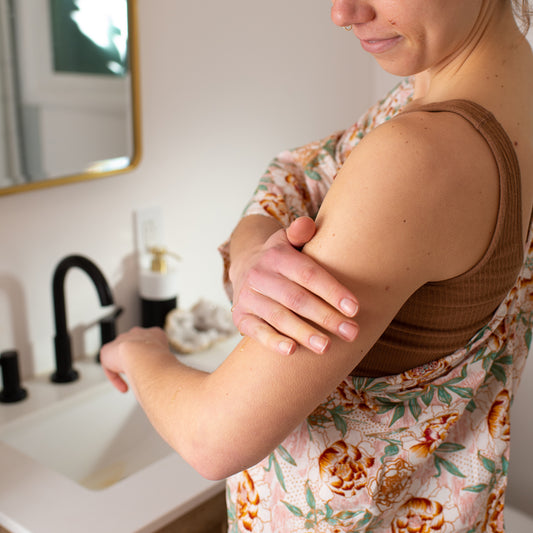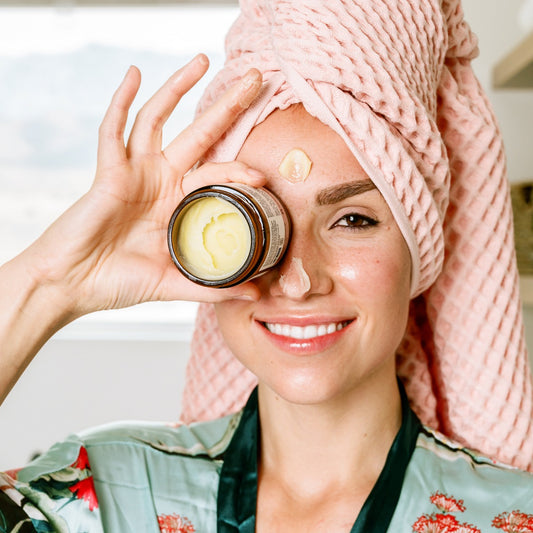Cow Face Pose (Gomukhasana) derives its name from the shape that the body makes. Just imagine, the arms are the ears and the legs are the mouth of the cow. The meaning of the Sanskrit name Gomukhasana breaks down as go (cow), and mukha (face).
Through the Ayurvedic Lens
This is a vata and kapha pacifying pose that benefits vyana vayu, the aspect of vata that governs circulation and circular movement throughout the body, and shleshaka kapha, the aspect of kapha that nourishes the joints. Apana vayu, the aspect of vata that governs downward grounding movement especially in the pelvis and legs, is also balanced in this pose.
Cow Face Pose stimulates asthi dhatu, the bone tissue, as this pose targets the pelvis—the largest bone in the body and a main site of asthi dhatu. Majja dhatu, primarily nervous tissue and bone marrow, is supported through coordination of movement and joint activation.
How to Practice
Cow Face Pose is a relatively advanced asana because it requires the practitioner to have hip, knee, and shoulder flexibility. One way to approach this asana is to start from hands and knees. From there:
Beginning with the lower part of the body, cross your right knee in front of your left knee as you open your feet out to the sides. Inhale as you sit down, keeping the knees crossed, and exhale as you allow your buttocks to land in-between your feet.
Ideally, your knees are stacked on top of each other and you are seated evenly through right and left hips. Take a moment to exhale. Ground your energy and breathe down toward your hips.
Focusing on the upper body, inhale to lift your right arm overhead. Exhale, as you rotate the top of the arm toward your head, bend the elbow so that your hand comes between your shoulder blades.
On your next inhale, lift and extend your left arm in front of your body. On the exhale, rotate the arm by turning your thumb down to the floor as you swing the arm behind you. Inhale and bend the left elbow behind your back. Try to reach for your right hand and bind your fingers together.
Allow yourself to settle into this pose for thirty seconds working up to two minutes per side. Inhale, open the chest, and exhale, sending energy down to the legs and hips. Maintain even Ujjayi breathing.
Repeat and reverse directions to the left side.
Variations or Modifications
If you're feeling an uncomfortable tightness in your hips or knees, try a lower body modification by keeping your bottom leg straight out in front of you and working the top bent leg to open one hip at a time, then switch legs and repeat. You may also sit on a bolster, blanket, or pillow to elevate your hips and give your joints more room.
Upper body modifications include using a strap or belt if hands don't meet behind the back. You can also just work on the top arm shoulder opening while holding your elbow at the top with your opposite arm. For an even simpler variation, you can just keep your hands at your heart.
You may also deepen the pose by bending forward over the legs which will create a deeper stretch and intensify the hip and shoulder opening.
Contraindications
In general, this pose is great for all. However, anyone with hip, knee, or shoulder injury should proceed with caution and slowly. Let your breath be your guide as to how far to go and how long to maintain the pose.










